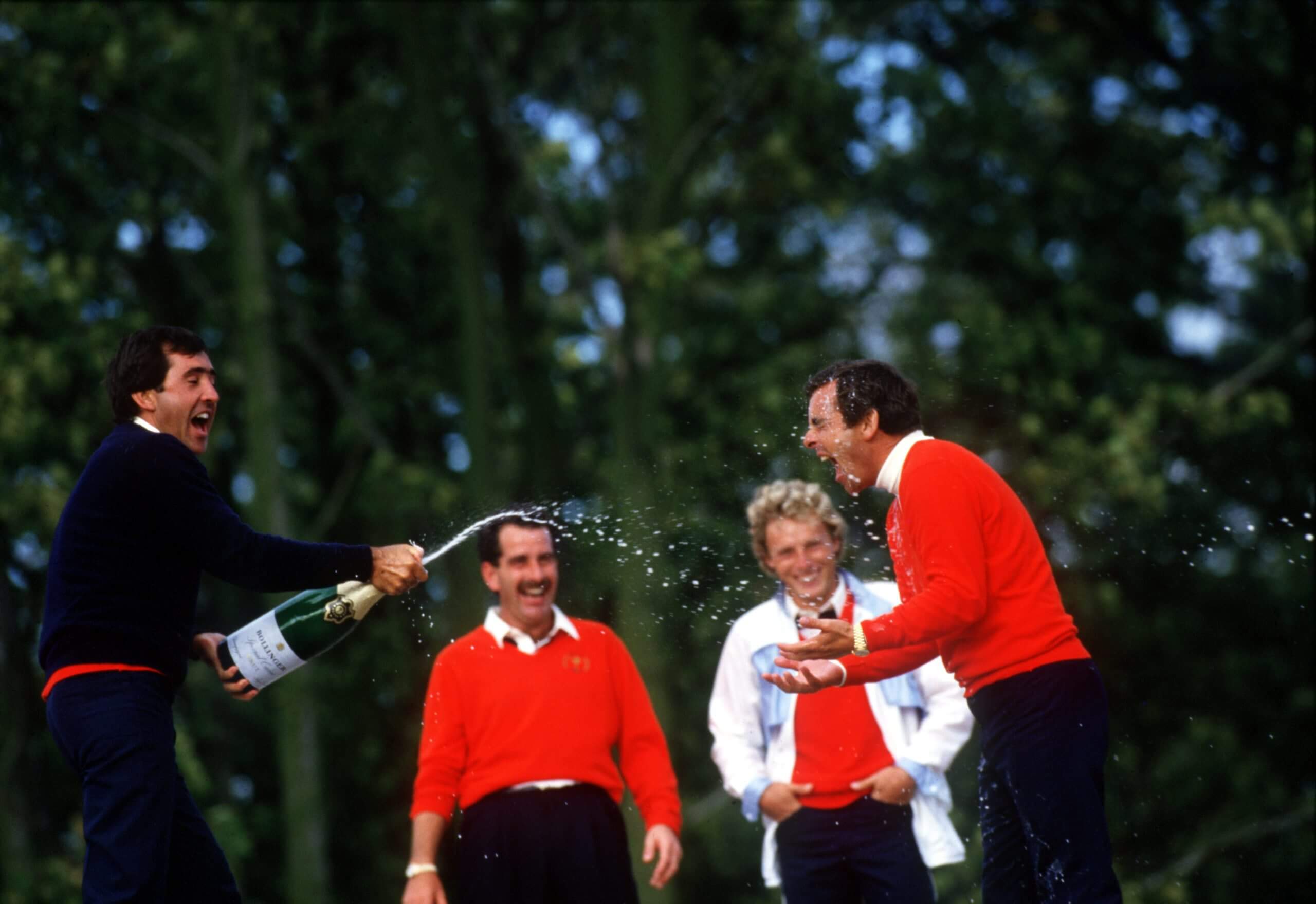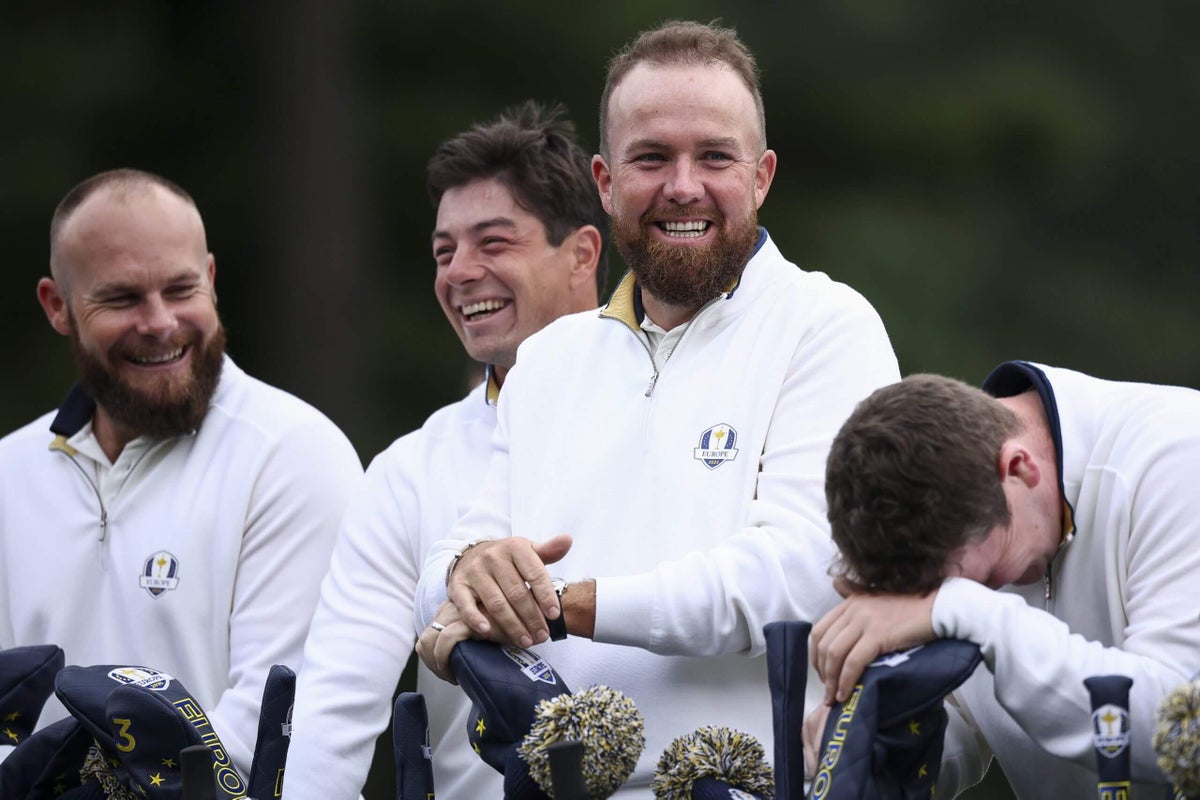During the opening ceremony of the 2021 Ryder Cup, captain Padraig Harrington and the European team played a motivational video of past greats speaking on the pride of representing their continent. As the video concluded, former European captain Thomas Bjørn spoke.
“We have different cultures and backgrounds and we believe in different things,” he said.
Then the great Bernhard Langer finished his thought.
“And yet when we come together, magic happens.”
A Dane handing it off to a German to set up an Irishman, three European greats, practically speaking in tandem to explain how different this team room can be. It’s a concept that wouldn’t have been possible 50 years ago. But it’s also an element European players often laugh at how it’s misportrayed.
Year after year, stories are written about the U.S. team trying to catch up to the European bond and how the Americans are becoming so close, while past European greats roll their eyes. Scottish great Colin Montgomerie once put it this way: “We’re not always one big happy family. Things happen, issues come up …
“We’re all pulling together because we play golf,” Montgomerie said, “not because we like each other particularly.”
Diversity for European Ryder Cup teams is nothing new. After nearly 60 years of the cup only being a battle between 12 Americans and 12 golfers from Great Britain and Ireland, the cup expanded the GB&I contingent to all of Europe in 1979. Europe won just once since 1947, damaging any intrigue left in the event, so it took all the help it could get from Spanish golfers like the great Seve Ballesteros.
Soon came Langer in 1981 to represent Germany. More Spaniards joined, and by 1985, Europe won to end its 30-year drought. From then on, the beloved event every two years has become more even, if not completely flipped, with Europe winning 12 of the past 19 Ryder Cups.
But as we look at the 2025 Ryder Cup team set to tee off Friday at Bethpage Black in New York, the entire evolution of this European golf diaspora becomes clearer. It is a team with five golfers from outside of the British Isles, and many of those are from countries that hardly contended at golf back in 1979. Outside of Spanish mainstay Jon Rahm, there’s Viktor Hovland from Norway, Ludvig Åberg from Sweden and Rasmus Højgaard from Denmark (Højgaard’s twin Nicolai was on the team two years ago). Then, add in Sepp Straka, a native Austrian who moved to the U.S. as a teenager.
Two years ago, the European team was at an inflection point. The aging team was demolished by the U.S. at the 2021 Ryder Cup at Whistling Straits, 19 to 9, and a year later began the exodus of veteran Europeans resigning from the DP World Tour to join LIV Golf. It meant new leadership, like captain Luke Donald, and it meant the likely end to the runs of older greats like Lee Westwood, Sergio Garcia, Henrik Stenson and Ian Poulter.
Now, Europe is defending champ and a contender at a road Ryder Cup. Much of that stems from a continental shift and work decades in the making.
Even if the team expanded in 1979, the stable of countries remained steady for the first 15 years. From 1979 to 1991, the team was essentially always anywhere from two to four Spaniards and the German Langer with the rest of the team filled out with players from Great Britain and Ireland.
However, as the golf boom continues, so too do national golf academies in smaller countries and efforts to make the sport more accessible, aiming to develop new generations. Suddenly, a map of European participation spreads further east and north than many ever dreamed.
“With the UK, golf has been around for so long over there,” Hovland said, “and I think we’re just catching up.”
In 1993 came the first real shift from the norms. In addition to Langer, Ballesteros and fellow Spaniard José María Olazábal, the team added Italian veteran Constantino Rocca. The first Swede was also chosen that year in Joakim Haeggman, but an injury held him out. Since then, 11 different Swedes have made 20 total appearances.
Then, 1997 became something of a breakthrough moment. The story of that week was Ballesteros finally serving as captain and it coming at the first Ryder Cup in continental Europe, Valderrama Golf Club in Spain. Less discussed was that it was the first time Europe fielded a team of at least half continental Europeans. In fact, seven of 12 golfers were from outside the British Isles with players from Germany, Spain, Italy, Sweden and the first Danish addition, Bjørn.
And Europe won, 14 1/2 to 13 1/2.
The team had six continental Europeans the next two cups, losing at Brookline in 1999 before winning at The Belfry in 2002.
“To be honest,” said Paul McGinley, a three-time Ryder Cupper and winning captain, “It’s not a big thing. It’s something that happens without us being totally conscious of it or worried about it. It’s organic.”
In the old days, sure, Europe leaned heavily on those surface-level relationships like nationality, McGinley said. They’d pair the Spaniards together or stick a Swede with another Swede. But nowadays, data rules the day. Any pairing suggested is because the players complement each other in that particular format with statistical evidence to back it up. Relationships certainly help, but they aren’t the starting point.
Still, the overall growth of top players in other countries remained limited. Germany only produced one other player in all this time, three-time participant Martin Kaymer. Bjørn broke through for Denmark, but only one other Dane joined him for 20 years until the Hojgaard twins. France had its first in Jean Van De Velde in 1999, but the country has only produced three total players, each with one appearance. The Molinari brothers, Francesco and Edoardo, added to the Italy tally in 2010, with Edoardo playing three times total and both members becoming mainstays as vice captains. Yet Italy has still only produced three total. Belgium also had two in the 2010s with Thomas Pieters and Nicolas Colsaerts.

Spain’s Seve Ballestros, left, celebrates winning the 1983 Ryder Cup with captain Tony Jacklin, right, as Scotland’s Sam Torrance and Germany’s Bernhard Langer watch. (Getty Images)
In recent years, though, a new wave of faces expands this team’s reach.
Jon Rahm came along in 2018, adding to Spain’s 11 players and 43 appearances. Then in 2021, Norway gained its first, Hovland. The first Austrian to join him was Bernd Wiesberger, and now there is Straka.
But the Scandinavian movement really broke through in 2023. Hovland returned, and a new crew of young prospects broke out in Rome for a European victory. Captain Luke Donald took some risks, choosing 22-year-old Nicolai Højgaard and the 23-year-old Åberg. Åberg had just turned pro months before and hadn’t even played in a major yet. Rasmus Højgaard just missed out, but he was involved with the team and drove a cart.
Now, a large part of the European core is Scandinavians between age 24 and 27, and Straka, 32, won two PGA Tour events this year to become a top 20 player in the world.
In regard to the intercultural dynamics, McGinley conceded they are always keeping an eye out for how players gel. Last week, the European team did a scouting trip to Bethpage Black, and captains spent much of that time watching lunch tables to see who sat together and who didn’t. They don’t want somebody feeling isolated. He was pleasantly surprised to see constant variations of tables of different cultures changing each day. And there’s also been a concerted effort to ensure there are vice captains from different parts of the world to keep continental Europe involved. Fittingly, Donald picked all five vice captains from continental Europe this year: Thomas Bjørn, Alex Norén, Edoardo Molinari, José María Olazábal and Francesco Molinari.
There are differences, though. McGinley maintained the strongest voices in the room, for whatever reason, have been the Great Britain & Ireland players like Lee Westwood, Darren Clarke and Colin Montgomerie, although Spanish great Sergio Garcia was one of the vocal leaders. McIlroy is the strongest voice now, and even the Irishman Shane Lowry is joining him.
“It’s generally that the British and Irish are more outgoing and have that kind of sense of humor where they want to have fun,” McGinley said. “The Europeans seem to be more laid back, a little bit more distant, quieter, more contemplative.”
But there had to have been an underlying cause for this shift, right?
Like Hovland said, some of it is simply the growth in golf accessibility in other parts of the world. Some is dedication to development. Sweden was one of the earliest adopters, creating national programs to invest in amateur golf. Even though Straka was developed in the U.S., Austria has done the same.
Outlets in Austria, for example, cited that golf in the country used to be reserved for the wealthy but its changed in recent years. According to European Golf Association data, Austrian golf registration has risen from 80,000 to roughly 125,000 in the last decade.
Scandinavian countries, on the other hand, have smaller populations but some of the highest rates of golfers per 100,000 residents, with Denmark and Finland in the top four (Iceland and Ireland are No. 1 and 2, respectively).
“Playing golf in Scandinavia is pretty cheap,” Hovland said. “Compared to the States, it’s a little different in terms of pricing and stuff.”
Deep down, very little of this actually affects the team room. Whereas Langher, Ballestros and that generation raced to turn professional, the modern golf structure can favor playing college golf in the U.S. It’s becoming more and more normal for young golfers to know each other through the amateur circuit. They all speak English, too. Yes, the Højgaard brothers went pro at 19, but most of the newer core of Rahm, Hovland, Åberg, Straka, and Robert MacIntyre played college golf in the States. Hovland has a great relationship with his 2023 partner Åberg, and the majority of the younger players already play practice rounds on the PGA Tour with stars like Rory McIlroy and Tommy Fleetwood.
What will be interesting to follow is what the future outlook will be of European teams. Justin Rose is surely toward the end of his run. McIlroy is 36. Fleetwood is 34. Shane Lowry is 38. While none of them appear to be slowing down, it’s rare to maintain elite golf into your 40s. Who will step into those teams down the road?
It’s impossible to predict, but some of the best young Europeans are, again, outside GB&I. Nicolai, still just 24, will likely be back on teams. Fellow countryman Rasmus Neergard-Peterson, 26, made a name for himself in 2025. Spaniard David Puig, 23, is an exciting talent on the LIV tour, but then again so is 22-year-old Northern Irishman Tom McKibbin. And established Englishmen like Harry Hall, Aaron Rai and Marco Penge aren’t necessarily going anywhere.
Maybe the better question is what country will join the 14 that have sent golfers to the Ryder Cup so far. It’s grown little by little each decade. Who will join the family next?
(Top photo of, left to right, Tyrrell Hatton, Viktor Hovland, Shane Lowry and Robert MacIntyre: Jared C. Tilton / Getty Images)







